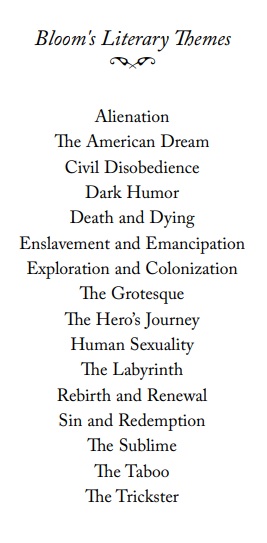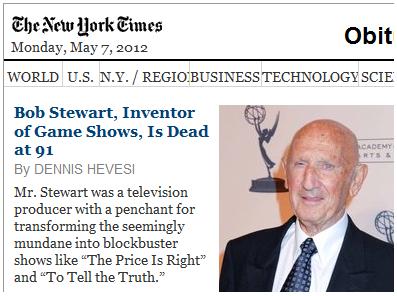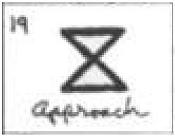Mark
Today is the feast of Saint Mark. It seems an appropriate day to thank Dr. Gerald McDaniel for his online cultural calendar, which is invaluable for suggesting blog topics.
Yesterday's entry "Cross-Referenced" referred to a bizarre meditation of mine titled "The Matthias Defense," which combines some thoughts of Nabokov on lunacy with some of my own thoughts on the Judeo-Christian tradition (i.e., also on lunacy). In this connection, the following is of interest:
From a site titled Meaning of the Twentieth Century —
"Freeman Dyson has expressed some thoughts on craziness. In a Scientific American article called 'Innovation in Physics,' he began by quoting Niels Bohr. Bohr had been in attendance at a lecture in which Wolfgang Pauli proposed a new theory of elementary particles. Pauli came under heavy criticism, which Bohr summed up for him: 'We are all agreed that your theory is crazy. The question which divides us is whether it is crazy enough to have a chance of being correct. My own feeling is that is not crazy enough.' To that Freeman added: 'When a great innovation appears, it will almost certainly be in a muddled, incomplete and confusing form. To the discoverer, himself, it will be only half understood; to everyone else, it will be a mystery. For any speculation which does not at first glance look crazy, there is no hope!' "
— Kenneth Brower, The Starship and the Canoe, 1979, pp. 146, 147
It is my hope that the speculation, implied in The Matthias Defense, that the number 162 has astonishing mystical properties (as a page number, article number, etc.) is sufficiently crazy to satisfy Pauli and his friend Jung as well as the more conventional thinkers Bohr and Dyson. It is no less crazy than Christianity, and has a certain mad simplicity that perhaps improves on some of that religion's lunatic doctrines.
Some fruits of the "162 theory" —
Searching on Google for muses 162, we find the following Orphic Hymn to Apollo and a footnote of interest:
27 Tis thine all Nature's music to inspire,
28 With various-sounding, harmonising lyre;
29 Now the last string thou tun'ft to sweet accord,
30 Divinely warbling now the highest chord….
"Page 162 Verse 29…. Now the last string…. Gesner well observes, in his notes to this Hymn, that the comparison and conjunction of the musical and astronomical elements are most ancient; being derived from Orpheus and Pythagoras, to Plato. Now, according to the Orphic and Pythagoric doctrine, the lyre of Apollo is an image of the celestial harmony…."
For the "highest chord" in a metaphorical sense, see selection 162 of the 1919 edition of The Oxford Book of English Verse (whose editor apparently had a strong religious belief in the Muses (led by Apollo)). This selection contains the phrase "an ever-fixèd mark" — appropriately enough for this saint's day. The word "mark," in turn, suggests a Google search for the phrase "runes to grave" Hardy, after a poem quoted in G. H. Hardy's A Mathematician's Apology.
Such a search yields a website that quotes Housman as the source of the "runes" phrase, and a further search yields what is apparently the entire poem:
Smooth Between Sea and Land
by A. E. Housman
Smooth between sea and land
Is laid the yellow sand,
And here through summer days
The seed of Adam plays.
Here the child comes to found
His unremaining mound,
And the grown lad to score
Two names upon the shore.
Here, on the level sand,
Between the sea and land,
What shall I build or write
Against the fall of night?
Tell me of runes to grave
That hold the bursting wave,
Or bastions to design
For longer date than mine.
Shall it be Troy or Rome
I fence against the foam
Or my own name, to stay
When I depart for aye?
Nothing: too near at hand
Planing the figured sand,
Effacing clean and fast
Cities not built to last
And charms devised in vain,
Pours the confounding main.
(Said to be from More Poems (Knopf, 1936), p. 64)
Housman asks the reader to tell him of runes to grave or bastions to design. Here, as examples, are one rune and one bastion.
 Dagaz: (Pronounced thaw-gauze, but with the "th" voiced as in "the," not unvoiced as in "thick") (Day or dawn.)
Dagaz: (Pronounced thaw-gauze, but with the "th" voiced as in "the," not unvoiced as in "thick") (Day or dawn.)
From Rune Meanings:
Dagaz means "breakthrough, awakening, awareness. Daylight clarity as opposed to nighttime uncertainty. A time to plan or embark upon an enterprise. The power of change directed by your own will, transformation. Hope/happiness, the ideal. Security and certainty. Growth and release. Balance point, the place where opposites meet."
Also known as "the rune of transformation."
For the Dagaz rune in another context, see Geometry of the I Ching. The geometry discussed there does, in a sense, "hold the bursting wave," through its connection with Walsh functions, hence with harmonic analysis.
 Temple of Athena Nike on the Nike Bastion, the Acropolis, Athens. Here is a relevant passage from Paul Valéry's Eupalinos ou L'Architecte about another temple of four columns:
Temple of Athena Nike on the Nike Bastion, the Acropolis, Athens. Here is a relevant passage from Paul Valéry's Eupalinos ou L'Architecte about another temple of four columns:
Et puis… Écoute, Phèdre (me disait-il encore), ce petit temple que j'ai bâti pour Hermès, à quelques pas d'ici, si tu savais ce qu'il est pour moi ! — Où le passant ne voit qu'une élégante chapelle, — c'est peu de chose: quatre colonnes, un style très simple, — j'ai mis le souvenir d'un clair jour de ma vie. Ô douce métamorphose ! Ce temple délicat, nul ne le sait, est l'image mathématique d'une fille de Corinthe que j'ai heureusement aimée. Il en reproduit fidèlement les proportions particulières. Il vit pour moi !
Four columns, in a sense more suited to Hardy's interests, are also a recurrent theme in The Diamond 16 Puzzle and Diamond Theory.
Apart from the word "mark" in The Oxford Book of English Verse, as noted above, neither the rune nor the bastion discussed has any apparent connection with the number 162… but seek and ye shall find.































 Dagaz: (
Dagaz: ( Temple of Athena Nike on the Nike Bastion, the Acropolis, Athens. Here is a relevant passage from
Temple of Athena Nike on the Nike Bastion, the Acropolis, Athens. Here is a relevant passage from